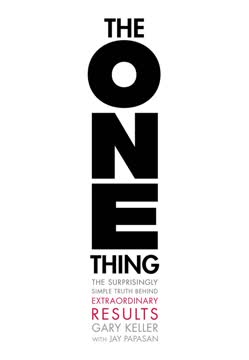Key Takeaways
1. The Six Frames: A Tool for Extracting Value from Information
"The Six Frames provide a method for extracting more value from information. They are therefore as important as the information itself."
Information overload challenge. In today's digital age, we are bombarded with information from various sources. The challenge lies not in accessing information, but in effectively processing and extracting value from it.
Six Frames as a solution. Edward de Bono introduces the Six Frames as a systematic approach to thinking about information:
- Triangle Frame (Purpose)
- Circle Frame (Accuracy)
- Square Frame (Point of View)
- Heart Frame (Interest)
- Diamond Frame (Value)
- Slab Frame (Outcome)
These frames provide a structured method for directing attention to different aspects of information, enabling more comprehensive and valuable insights.
2. Purpose: The Triangle Frame for Clarifying Information Needs
"The purpose of the Triangle Frame is to lay out very clearly – for yourself or others to see – the purpose of looking at the information."
Defining information goals. The Triangle Frame focuses on clarifying the purpose of engaging with information. It prompts users to consider:
- What specific information is needed?
- Why is this information valuable or necessary?
- Where should one look for this information?
Importance of clarity. By explicitly stating the purpose, individuals and teams can:
- Avoid wasting time on irrelevant information
- Focus their efforts more effectively
- Ensure that the information gathered aligns with their objectives
3. Accuracy: The Circle Frame for Assessing Information Reliability
"Accuracy of information is of vital importance if you have to rely on that information for action, belief or opinion."
Evaluating credibility. The Circle Frame directs attention to the accuracy and reliability of information. This involves:
- Assessing the authority of the source
- Looking for internal inconsistencies
- Comparing information from multiple sources
- Considering the adequacy of accuracy for the intended purpose
Critical thinking. Developing a habit of questioning and verifying information is crucial in an era of widespread misinformation and fake news.
4. Point of View: The Square Frame for Recognizing Bias and Perspective
"Story-telling is important to all parts of the media. It is believed, probably correctly, that only stories are interesting – accurate facts are not."
Identifying bias. The Square Frame encourages readers to recognize the point of view presented in the information:
- Is the information objective or subjective?
- What biases might be present?
- Are alternative viewpoints considered?
Multiple perspectives. By understanding the perspective from which information is presented, readers can:
- Develop a more balanced understanding of issues
- Recognize potential gaps or omissions in the information
- Seek out alternative viewpoints for a more comprehensive picture
5. Interest: The Heart Frame for Identifying Engaging Information
"Interest is attractive and appealing. Something you pick up out of interest enters your memory and may be of great use later – but you do not pick it up for its usefulness."
Cultivating curiosity. The Heart Frame focuses on identifying information that is inherently interesting or engaging. This can include:
- Surprising or unexpected facts
- Information that adds to existing knowledge
- Topics of special personal or professional interest
Long-term value. While interest may seem intangible, it plays a crucial role in:
- Enhancing memory and retention of information
- Building a diverse knowledge base that can be valuable in unforeseen ways
- Maintaining motivation and engagement in learning and information gathering
6. Value: The Diamond Frame for Evaluating Information Worth
"The Diamond Frame is a sort of summary and overview: 'What has been the value of this information?'"
Assessing utility. The Diamond Frame prompts users to evaluate the overall value of the information, considering:
- How well it satisfies specific needs or answers questions
- Its potential for creating opportunities or solving problems
- Its contribution to general awareness and knowledge enrichment
Types of value. De Bono suggests considering different types of value:
- Gold Medal: Human values
- Silver Medal: Organizational values
- Steel Medal: Quality values
- Glass Medal: Innovation values
- Wood Medal: Ecological values
- Brass Medal: Perceptual values
7. Outcome: The Slab Frame for Summarizing Conclusions and Next Steps
"The Slab Frame is for the outcome and conclusion. It requires a deliberate effort to lay out the conclusion on the slab for yourself and others to see."
Synthesizing insights. The Slab Frame encourages users to:
- Summarize the key takeaways from the information
- Articulate clear conclusions
- Identify necessary next steps or further areas of inquiry
Action orientation. By explicitly stating outcomes and conclusions, the Slab Frame helps bridge the gap between information gathering and practical application or decision-making.
8. Directing Attention: The Key to Effective Information Processing
"Attention is a very key part of thinking. Yet we pay very little attention to attention itself. It is assumed that it just happens."
Conscious focus. De Bono emphasizes the importance of deliberately directing attention when processing information:
- Instead of passively waiting for information to catch our attention, we can actively choose where to focus
- By consciously directing attention to different aspects of information (using the Six Frames), we can extract more value and insights
Overcoming limitations. Deliberate attention direction helps overcome natural biases and limitations in our information processing:
- Counters the tendency to focus only on the unusual or striking information
- Ensures a more comprehensive analysis by systematically considering different aspects of the information
9. Balancing Clarity and Comprehensiveness in Information Analysis
"The big enemy of good thinking is confusion."
Avoiding overwhelm. De Bono highlights the challenge of maintaining both clarity and comprehensiveness when dealing with information:
- Attempting to consider all aspects simultaneously often leads to confusion
- Focusing too narrowly can result in incomplete or biased understanding
Structured approach. The Six Frames offer a solution by:
- Breaking down the information analysis process into distinct, manageable steps
- Ensuring that different aspects of the information are considered systematically
- Allowing for both detailed examination and holistic understanding
10. The Importance of Human Judgment in the Age of Computer Analysis
"We are getting used to putting all our information into a computer and then letting the computer analyse that information. This is a growing danger."
Human vs. machine analysis. De Bono cautions against over-reliance on computer analysis of information:
- Computers excel at processing large amounts of data but lack human judgment and intuition
- The Six Frames require human interpretation and cannot be easily automated
Complementary approach. The ideal solution combines:
- Computer power for data processing and initial analysis
- Human judgment, guided by frameworks like the Six Frames, for interpretation, nuanced understanding, and creative insights
By using the Six Frames, individuals and organizations can enhance their ability to extract value from information, make better decisions, and develop more comprehensive understandings of complex issues.
Last updated:
Review Summary
Six Frames received mixed reviews, with an average rating of 3.07/5. Many readers found it simplistic, repetitive, and lacking depth. Some appreciated the basic framework for analyzing information but felt it could have been condensed into a few pages. Critics noted that the concepts were obvious and poorly presented. A few readers found value in the six-frame approach for handling information overload, while others saw it as impractical. Some positive reviews mentioned its simplicity and potential usefulness, though many felt it fell short of expectations.
Similar Books
Download PDF
Download EPUB
.epub digital book format is ideal for reading ebooks on phones, tablets, and e-readers.


















